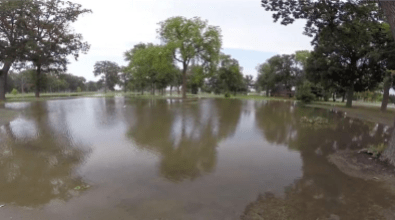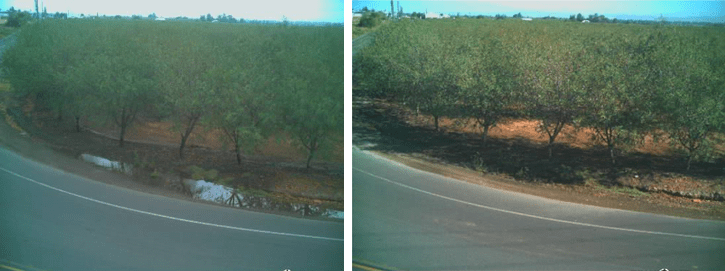Municipality
Engineered Water Management Solutions
Save Time & Money
Belle Isle, Detroit, MI
The primary goals of this investigation were to determine if the EGRPTM system could eliminate standing water on an approximately 24 acre parcel and decrease the volume of stormwater delivered to DWSD through the municipal combined sewer drain system thereby alleviating the cost associated with treatment. A secondary goal was to explore the effect the EGRPTM system has on groundwater.
- Prior to installation, the amount of runoff volume was nearly double the amount of rainfall volume due to the pipe network capturing water from a larger area of the island and possibly influenced by the Detroit River.
- After installation, the runoff volume is much less than rainfall volume.
- The rain fall has less direct impact on the amount of runoff from the site when comparing control site versus test site.
- There was an 80% reduction in the total amount of runoff volume from the test site.
Control site after rain

EGRPTM (test) site after rain

Coleman A. Young International Airport, Detroit, MI
This project was developed to address to the concerns of the Michigan Department of Environmental Quality (MDEQ) in regards to the EGRPTM system’s influence on the infiltration of surface water and its potential to accelerate surface water contaminates into the groundwater supply. Data showed that the EGRPTM increased the infiltration rate of surface water 7 to 10 times the rate of native soil conditions. The study also concluded that EGRPTM do not act as vertical drains or injection wells that allow water, along with its’ constituents, to flow straight down to the bottom of the EGRPTM systems (Lusch 2015).
Geneva International Airport, Switzerland
ParjanaSM EGRPTM system was installed at Geneva International Airport (GIA) in late 2012 and was constantly monitored through piezometric testing for nearly two year (GADZ 2014). The goal for GIA was to reduce or eliminate water seepage into underground concrete chambers that are common at the airport; especially chambers that are remote from existing storm water sewer systems. The research goal is to compare the effects of EGRPTM device on shallow water tables and soil moisture distribution. Unlike other typical EGRPTM installations, this location had no issues with standing surface water.
The report indicated the water table was higher in the area of the EGRPTM system during dry periods. GADZ attributed this to the fact the EGRPTM “worked to maintain a degree of saturation as constant as possible in the soil” and the EGRPTM system is moving water vertically in both directions thereby creating communication between the surficial layers of topsoil and the permeable to semi-permeable soils beneath (PCS2014).
Warnerville Rd, Oakdale, CA
An almond orchard in California was experiencing flooding near the edge of the orchard along the road, posing a huge safety hazard to drivers.
Standing water could accumulate here following most rain events above 0.3” and remain standing for 8-10 weeks, even leading to the accumulation of algae.
With EGRPTM, infiltration has increased considerably, and the road is no longer unsafe due to standing water. Pictured below: on 10/03/18, a 1.25” rain event was recorded at a nearby weather station. Water infiltrated under 48 hrs.

Lawrence Technological University, Southfield, MI
Lawrence Technological University (LTU) is leading a collaboration of industry partners in a multi-state demonstration project featuring the implementation of an innovative and scalable integrated drainage design that significantly mitigates polluted parking lot stormwater runoff. The integrated drainage system includes three separate patented technologies combined in a novel approach including a porous pavement surface (parking performance maintained), an underground engineered soil storage reservoir (for stormwater storage and water quality filtration) and the Energy-passive Groundwater Recharge Product (EGRPTM) (to improve infiltration and reduce runoff).
A preliminary, 3rd party evaluation of the impact of the EGRPTM on groundwater elevation and recovery time at the Lawrence Technological University site was conducted and found:
- Magnitude of change in groundwater elevation was greater during storm events in 2017 vs. 2016
- Groundwaterelevationsincreasedmorerapidlyduringstormeventsin2017vs.2016
- Groundwater levels recover to baselineelevationsfasterin2017vs.2016
- Horizontal hydraulic gradients measured in the wells increased more rapidly during rain events in 2017 vs. 2016

